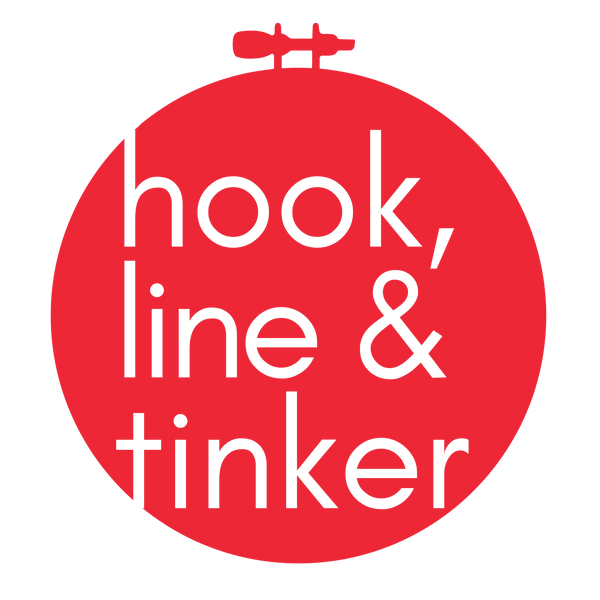If you are someone that purchases PDF patterns, wants to make their own patterns, or is just naturally curious about how things work, I just may be sharing a little bit of magic with you today.
Although all of our patterns are now printed on our super fancy, monster-sized, commercial-grade fabric printer, printing used to be pretty lo-fi here at the studio.
For six months before I launched Hook, Line & Tinker in 2017, I heavily experimented with varying methods of printing on fabric. It wasn't the sexiest aspect of launching a creative business (yawn). I didn't know if anything would even come out of all my efforts. Time has proven it was time well spent. All that trial and error helped me to discover my own simple but effective way to transfer prints to fabric. Although I've been pretty mum about it in the past, I'm now spilling my secrets.
Hook Line & Tinker's original printing process is quick, easy, and readily repeatable at home…by YOU. The truth is, for my first 4 years creating embroidery kits, I printed all my fabric using an (ahem) inkjet printer.

You may already have everything you need to make your own print magic around your home or office. Ready to give it a go?
Supplies:
To print PDF patterns to fabric, all you need is:
1) Light colored cotton fabric cut to 8 ½” x 8 ½” I’ve personally only worked with cotton. So while I know that quilting cotton and unbleached cotton work great using this method, I simply don’t know how the technique will work with other fabric types. But by all means, experiment and let me know how it goes! Keep in mind that the darker the fabric, the more difficult it becomes to view the lines when it’s time to stitch.
2) 1 sheet 8 ½” x 11” (A4) cardstock
Whether you use a fresh piece or one pulled from recycling, you just need one letter-sized piece of cardstock. Once you prep your piece of cardstock, it can be used again and again. I have sheets that were literally used hundreds of times.
3) Painter’s tape
I have always used green painters tape because I tend to use it for everything. (Labeling books going to and from school, putting dates on leftovers in the fridge, etc.) Masking tape might work too, but clear tape and washi tape is not recommended.
4) Inkjet printer
In my experience, the cheapest ones worked just as well as the pricier printers. Work with what you have. I can say with utmost confidence that a laserjet printer will NOT work. Aqueous inks are definitely the way to go whether they come in a cartridge or an eco-friendly bottle.
5) Digital image
Maybe a PDF pattern from Hook, Line & Tinker? I heard they have a lot of amazing patterns to choose from. (I'm completely biased.)
How to make the magic happen:
Step 1) Prep Your Cardstock Cover the top 1 ½ to 2” inches of your cardstock with painter’s tape. Two rows should be perfect.
Step 2) Attach Your Fabric Center your pre-cut fabric in the middle of your cardstock. Attach using painter’s tape along the top edge of the fabric only. So yes, you're adhering painter’s tape to painter’s tape.
Step 3) Print Your Fabric Here comes the exciting part! Put your prepared cardstock with fabric attached into your printer and then, you guessed it, print your pattern using black ink only (grayscale). Peel the fabric from the cardstock and remove or fold down the excess painter’s tape. That’s it! You’re ready to stitch.
The above instructions are for printing patterns sized for a 6” embroidery hoop. While you can use a printer with a larger format, I find the image maintains the best quality when sized for a 6” embroidery hoop. Ink is permanent.
Questions? Comments? Send me an email! And HAPPY STITCHING!
- Laurie Dolhan -

